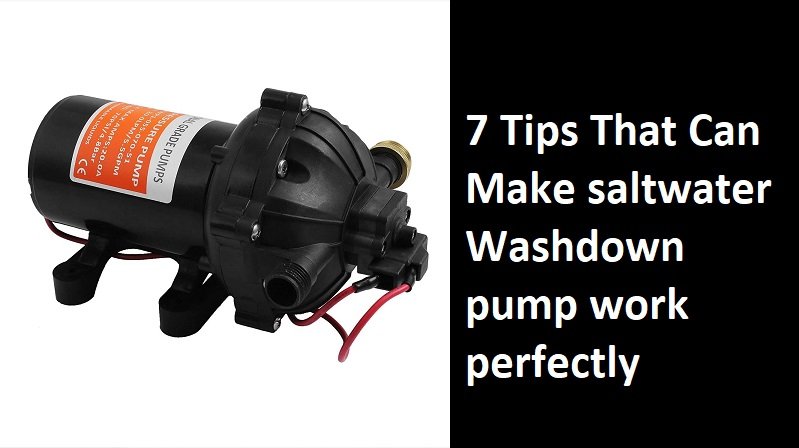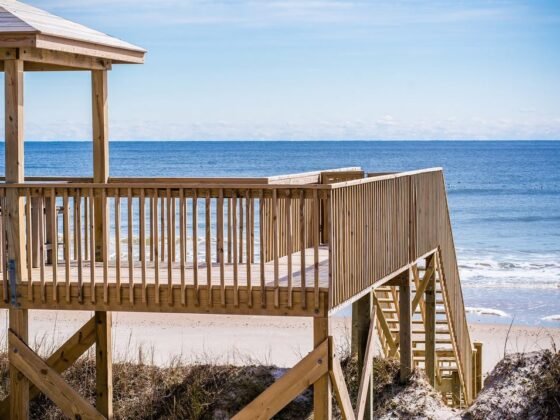Table of Contents Show
If you are struggling to clean your boat deep in the sea, don’t feel alone. There are a lot like you boating around and keep thinking the same. Cleaning a boat is not a joke, especially when it fills with blood stain, fish scale, and all those flotsam and jetsam.
Yet it would be easier and without breaking your back, if you find a perfect saltwater washdown pump. But do all pump work complete? No worries.
These are 7 Tips That Can make a saltwater washdown pump work perfectly for your boat. Could you not take it for granted? These are from professionals, not entirely mine though.

What is a Washdown Pump?
I am only doing this little knowledge sharing if in case you don’t have any idea about the washdown pump. The washdown pump is totally different from our usual household pumps or sump pump. They work with maximum pressure that our house pump even hold.
The washdown pump works with Nitrile elastomers, which is not suitable for regular drinking water. They are perfect for deck washing, anchor cleaning, and such tough jobs in the marine environment.
Moreover, they need an entirely different setup, wiring, and switching. On the above, this equipment can tolerate running dry without damage.
Read Also:
What are Those 7 Useful Tips?
Whenever I go out fishing with my boat, it always comes to my mind why the makers did not include a pump with it? I mean, it’s a standard demand, not the luxury.
Because installing it later will lessen the beauty of the boat. It also allows for unnecessary drilling and dripping.
Fishing always excites me and alerts at the same time. Excites with the swarms of fish after a long struggle and then warns the boatman, aka us that a cleaning job is on the way.
But after installing a washdown pump truly makes me feel the bone at my back.
During this process, one of my friends helps me with some subtle tricks to make the pump work best. Now I am sharing them with you.
Tips no 1: Pump Placement
The water supply point is a crucial one if you want to get the most of a pump. A connection between the water inlet and the pump placement works well only hen big water run-up.
Most of these machines utilize the raw water where the boat is hovering. And in such a case, there is always the possibility of having corrosions. On the boat structure, if you need to store the water.
It’s better to install your pump at the point as close as possible to the thru-hull. And also had the power source nearby.
Tips no 2: Water Utilization
Not necessarily, you will wheel only on the brine. Or let’s assume to do so. It is, therefore, intelligent not being very specific on such machines. Nearly all washdown pump brands allow their pump to work on both fresh and saltwater supply. Hence, having an open option decreases the possibility of any unusual situation.
If you still have doubts, consult any of the professionals, thereby or search on any pumpadvisor website. You will find plenty to choose one.
Tips no 3: Choosing the Pump Right
Choosing the pump right or selecting the right pump. What is more important? Ohh. Silly you. Don’t confuse. It’s all over the same thing. Nothing but a wrong pump will make hell out of the journey—minimal power usage with sufficient pressure. That is all you need for a pump.
A typical saltwater washdown pump has outputs from 2.5 to 12 gallons per minute. Nevertheless, you use the washdown package. That includes a pump along with the hose, deck fitting, nosels, etc. and bundles work along well together naturally.
Tips no 4: A Must-have Thru-hull
Saltwater pumps work ideal when you have a thru-hull. You could use your existing one or have to make one. But it’s a must. A dedicated thru-hull allows you to immediately stop the water supply through the hose after having the work done. Only by concealing the seacock in the water system, we comprehend.
Tips no 5: Installation Examination
You have a perfect match pump machine, you have thru-hull as well, but you have a wrong installation. Will your pump work? Absolutely not. A well-managed facility helps you to experience flawless cleaning on the way.
Always follow the manual instructions A to Z. Use simple wiring and compatible cables with a 20-amp circuit breaker. Usually, it works with that. But consult with a professional about the one you need.
Besides, stuck the hose tight with clamps. Also, the pump-priming height, you must keep in mind. Some machine primes at 7 to 8 feet, whereas most of them fail if it is off 2 feet of the head. Never underestimate this self primer capability.
Tips no 6: Use Strainer
It is natural, we often look aside from the minimal but essential steps. In this case, there is also one. That is, of course, letting the filter go. If you want your washdown pump work accordingly and more extended, you must have placed a strainer intake between the water supply and this hydraulic machine. Nothing but to save it from all those floating marine lumbers.
It will save your boat and pump both from damages.
Tips no 7: Use Sealing for Safety
While installing your pump, avoid collision of the hose and wires. Or else you could experience savages. And of course, make sure that your hose does not coil up. Use seal on this purpose to avoid any of the leaks or drills.
Well, remember these are not installation steps. These are that tricky 7 Tips that can make saltwater washdown pumps work perfectly for you. I hope they help while think of installing a saltwater washdown pump to cut the trouble of cleaning your boat manually.
Conclusion
I know how much it pains while doing the whole cleaning process manually. So, mount a pump in your boat and let the washdown take over. Only mind these tips to make the arrangement works perfectly. And imagine your life more relaxed and peaceful in that deep blue sea.









